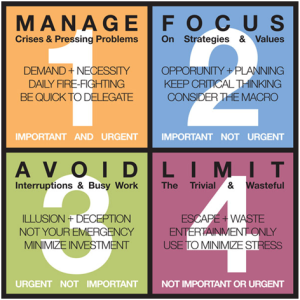Contributor Kristie Colby explains how to align your systems so that you can track prospects’ interactions all the way to the sale and beyond.

Marketers can struggle to prove the value of their programs when there isn’t always a direct response or purchase. This is especially true for B2B marketers focused on lead generation programs with long, complex sales cycles. So, how does a marketer faced with such a challenge assess the impact of their marketing efforts, prove contribution to revenue and demonstrate ROI?
Understand marketing objectives
Most marketers have several different goals that drive their strategies and programs. Typically, we are allocating resources across multiple programs and channels to meet the following objectives:
- Brand awareness and market positioning.
- Lead generation.
- Lead nurture and sales enablement.
- Target account acquisition (via Account Based Marketing).
- Customer loyalty and growth.
Each of these efforts will involve multiple touch points that have varying levels of impact on a prospect or customer’s decision-making process. But what is their ultimate value to the organization?
Critical success factors to measure marketing impact
Here are some of the items that need to be addressed in order to assess the value and contribution of marketing programs:
• Acquiring customer data. Marketers must have the technology and infrastructure in place to record meaningful information about various touch points that contribute to lead generation and customer acquisition. These systems do not rely solely on what the prospect might provide. For example, online registration forms might capture name, email, company name and phone number. In most cases, a marketing automation platform is used to supplement prospect-provided data.
TIP: Most marketing automation systems provide cookie data that can be appended to lead records automatically. Then, when that lead takes a specific action that is important to the marketing program, the engagement can be recognized and possibly addressed with proactive campaigns and programs.
• Ensure consistent parameters. The entire organization must utilize the same parameters and field values to record information related to lead/customer acquisition. They must be categorized with meaningful and actionable values that can be captured by the technology and systems in place. Most companies use a combination of UTM parameters that can be captured by hidden fields on forms and lead source details that can be programmed into a form or labeled within their own parameter.
TIP: Two parameters that must be consistently used by sales and marketing across all programs are utm_medium=[insert medium] and utm_source=[insert source name]. This allows proper channel grouping for the medium (marketing medium of the tagged URL — paid search, social, email, for example) and aligned source values (where the visitor clicked on the tagged URL — for example, Google, Facebook, newsletter).
Often, organizations don’t have total alignment on how to use and populate these parameters, and this can cause data errors and inconsistencies. Taking time to map all lead fields with values that can be used consistently is essential to evaluating marketing programs and their impact on revenue.
• Fully integrate systems. In order to maintain data integrity, sales and marketing systems must be aligned to share all of the data being acquired over time. Specifically, marketing automation and CRM systems must utilize the same fields, populate those fields with common values and pass these details back and forth as data is acquired. Data in these systems must sync as leads move through the sales cycle.
Furthermore, this integration allows marketers to personalize the experience they are creating for each prospect and measure the impact of individual touch points. One example of this type of data integration and how it effectively enables a personalized experience is for leads that have been qualified and sent to sales.
TIP: The ability to understand the marketing touch points a prospect previously engaged with will help sales reps set the proper tone and context for their initial sales discussion. The prospect’s specific challenges and requirements can be addressed with helpful, relevant content throughout the nurturing process and tackled head-on in sales discussions.
Later, when (hopefully) that prospect becomes a customer, the marketing automation system will route the record to a customer list and begin customized programs focused on loyalty and retention.
Now, with these three critical infrastructure items nailed down, marketers can focus on developing different types of reports to measure and analyze the impact of their programs.
Analysis and insights
With more data comes the power to analyze and assess marketing programs in multiple ways. As leads move through the funnel, I recommend that marketers consider and analyze their results based on these three views:
- Acquisition (initial lead source).
- Attribution (across channels and touch points).
- ABM (target account engagement).
By analyzing marketing data in these three ways, a marketer can start to:
- Understand the relative impact of various marketing programs.
- Allocate resources based on the efficient acquisition of qualified leads.
- Determine the best approach to attribution modeling.
- Quantify marketing’s contribution to pipeline value and revenue.
Why is this important? These insights allow marketers to better allocate resources, reduce waste and further accelerate sales.
Here is an example of how a marketer might utilize these insights to better focus their resources and drive sales. Let’s assume their organization has a long, complex sales cycle and therefore, had determined they wanted to take an ABM approach to a segment of their marketing programs. Beyond creating the target account list, the marketer will want to understand and measure engagement with multiple stakeholders within that target account.
It is likely that several different contacts within the account will participate in the process and engage with marketing programs over time. A clear understanding of which decision-makers are engaging, when, and how, will be much more insightful, when viewed in aggregate from the ABM perspective with attribution, than if each contact were viewed as an individual, independent lead and not treated as part of the whole. This ABM view will allow sales and marketing to communicate more effectively and efficiently with prospects based on all of the observed behaviors of the group of target account stakeholders.
Prove marketing ROI
Today’s marketers must demonstrate a clear, measurable contribution to the bottom line. This means you must be able to track and measure impact (in an integrated fashion across all sales and marketing systems), and you must be able to analyze all of this data holistically to draw insights, properly allocate budget and demonstrate ROI. This data-driven approach is critical to the success of any marketing team.
The ability to validate programs and confirm impact might seem like the unattainable holy grail for some marketers, but with this data and reporting in place, the holy grail is within your reach.
Opinions expressed in this article are those of the guest author and not necessarily Marketing Land. Staff authors are listed here.
Marketing Land – Internet Marketing News, Strategies & Tips
(59)
Report Post










